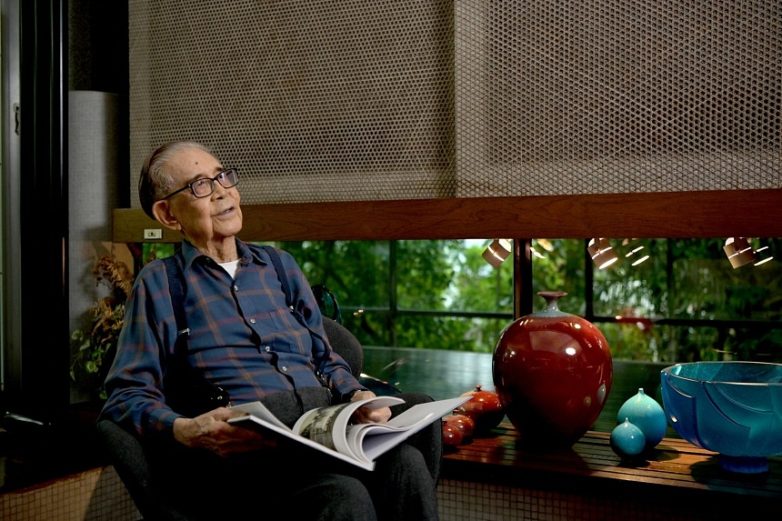

Death – Obituary- Cause of death News : Obituary – Death – Cause of Death News :
Singapore Mourns the Loss of Pioneer Architect Alfred Wong
On September 28, Singapore bid farewell to one of its pioneer architects, Mr Alfred Wong, who passed away at the age of 94 in his Bukit Timah home. Despite his age, Mr Wong remained surrounded by four generations of his family until his last moments.
Survived by his sons Clifford Wong Egon and Geoffrey Wong Ee Kay, as well as daughters Denise Wong Lei Ling and Michele Wong Lei Saan, Mr Wong leaves behind a legacy that extends beyond his family. Known for his strong principles, integrity, and diverse interests in music, art, and literature, he made a significant impact on Singapore’s architectural landscape.
Retiring in 2005, Mr Wong handed over the reins of his architectural firm, AWP Architects, to his younger brother Edward. Under their leadership, the company has grown to have over 70 employees and offices in China and Indonesia.
Mr Wong’s architectural contributions to Singapore include designing the National Theatre in 1963 and Hotel Malaysia in 1968. Despite both buildings being demolished in subsequent years, his legacy lives on through the impact he made on the architectural community.
Born in Hong Kong in 1930, Mr Wong’s journey led him to study civil engineering and later architecture in Melbourne, where he met his wife Joyce O’Hoy. Their marriage in 1953 marked the beginning of a life dedicated to shaping Singapore’s skyline.
As Singapore remembers and celebrates the life of Mr Alfred Wong, his influence on the architectural world and his commitment to his craft will continue to inspire future generations of architects and designers.

Pioneer architect Alfred Wong dies at age 94
Pioneer architect Alfred Wong dies at age 94
Who was Alfred Wong and what were his contributions to the field of architecture?
Alfred Wong was a renowned architect known for his innovative designs and commitment to sustainability. Throughout his career, Wong worked on numerous projects that pushed the boundaries of traditional architecture. His use of sustainable materials and focus on energy efficiency set him apart from his peers. Wong’s work can be seen in landmarks all over the world, from the iconic skyscrapers of New York City to the eco-friendly resorts of Bali.
One of Wong’s most notable contributions to the field of architecture was his development of the “green roof” concept. This innovative design feature involved covering the roofs of buildings with vegetation to improve energy efficiency and reduce carbon emissions. Wong’s green roofs became a staple in modern architecture, with many architects following his lead in creating sustainable buildings.
What was Wong’s design philosophy and how did it impact his work?
Wong’s design philosophy was rooted in the idea that architecture should not only be aesthetically pleasing but also sustainable and environmentally conscious. He believed that buildings should be a reflection of their surroundings and that architects had a responsibility to minimize their impact on the environment. Wong’s commitment to sustainability was evident in all of his projects, from large-scale commercial buildings to private residences.
Wong’s design philosophy had a significant impact on his work, influencing everything from the materials he used to the layout of his buildings. He was known for incorporating natural elements into his designs, such as living walls and water features, to create a sense of harmony between the built environment and nature. Wong’s buildings were also designed to maximize natural light and ventilation, reducing the need for artificial lighting and air conditioning.
How did Wong’s architectural style evolve over the course of his career?
Over the course of his career, Wong’s architectural style evolved to reflect changing trends in the industry and advancements in technology. In his early years, Wong was known for his bold, futuristic designs that often pushed the limits of engineering. As he gained more experience, Wong began to focus more on sustainability and environmental impact, incorporating green building practices into his work.
Wong’s later projects were characterized by their use of sustainable materials and energy-efficient design features. He became known for his innovative use of recycled materials and his ability to create buildings that were both visually striking and environmentally friendly. Wong’s architectural style continued to evolve until the end of his career, with each new project pushing the boundaries of what was possible in the field of architecture.
What was Wong’s impact on the architectural community?
Wong’s impact on the architectural community was profound, with many architects citing him as a major influence on their work. His commitment to sustainability and innovation inspired a new generation of architects to think differently about the way buildings are designed and constructed. Wong’s green roofs, in particular, became a symbol of the sustainable architecture movement, with architects around the world incorporating similar features into their own designs.
Wong’s legacy lives on through his buildings, which continue to inspire and impress people from all walks of life. His commitment to creating sustainable, environmentally conscious structures has left an indelible mark on the architectural community, shaping the way buildings are designed and constructed for years to come.
In conclusion, Alfred Wong was a pioneer architect whose innovative designs and commitment to sustainability have left a lasting impact on the field of architecture. His work continues to inspire architects around the world to think differently about the way buildings are designed and constructed. Wong’s legacy will live on through his buildings, which serve as a testament to his vision and creativity.



